- About us
- Support the Gallery
- Venue hire
- Publications
- Research library
- Organisation chart
- Employment
- Contact us
- Make a booking
- Onsite programs
- Online programs
- School visit information
- Learning resources
- Little Darlings
- Professional learning
Elizabeth Sarah (Lillie) Roberts (née Williamson, 1860–1928), artist and frame maker, studied at the National Gallery School in Melbourne in the early 1880s before a period spent travelling in Europe. She exhibited paintings with the Victorian Artist's Society between 1888 and 1892; and appears to have started making frames during the 1890s. She married artist Tom Roberts, a family friend, after a long courtship, in April 1896 and then moved to Sydney, where their only child, Caleb, was born in 1898. In 1903, dispirited at the lack of patronage in Australia, Roberts took his family to London, where Lillie trained in woodcarving and gilding. She later received a number of awards for her picture frames, examples of which were exhibited at the Royal Academy in 1908 and the Imperial Exhibition in 1909. They returned to Australia in 1923 and settled at Kallista in the Dandenongs, east of Melbourne. Two years after Lillie's death in 1928, Roberts remarried; his second wife, Jean Boyes, was one of Lillie's oldest friends.
This work is one of few existing paintings by Roberts known to be framed in a frame designed and carved by his wife.
Purchased with the assistance of funds provided by the Circle of Friends 2013
This portrait of Mrs Tom Roberts (Elizabeth) was painted in oil on canvas by her husband Tom Roberts in 1910. Elizabeth Roberts designed the ornate gold frame herself. It measures 96 cm by 84 cm and it is 22 cm deep. Large scrolls of decorative leaves adorn the middle of the frame’s top, bottom and sides and also cap each corner.
The canvas itself measures 74.1 cm by 60.8 cm. The overall colour tones of the plain background are subdued; pale, matte grey and green contrast strongly with the luminosity with which Mrs Roberts’ face is highlighted. Mrs Roberts sits in a central position in the composition. She’s turned at a 45-degree angle facing out of the picture to our right. Her upper body occupies most of the space. Her large hat is cropped at the top of the painting, her shoulders stretch across most of the canvas and at the base of the painting her hands rest on her lap. The painting style is realistic, with more detail in the face, the clothes becoming even softer and less distinct the further away from her face.
Mrs Roberts’ black hat is perched on the very top of her head, an ascending wrap of black chiffon forming a tall helmet shape. A swathe of the semi-transparent fabric hangs down her back from the top of the hat to behind and below her right shoulder, appearing black as it folds over itself and light grey between. Her head is turned to the right and slightly tilted back, showing a profile of pale flesh with a little pink blush around her cheek and underlying yellow tones especially around and under her eye. Her expression is engaged but not smiling.
A narrow forehead under the beak of her hat is framed by auburn brown hair with shades of grey, which is brushed back and pinned up behind her head.
Her eyebrows are dark, thin and arched, her eyes are an indistinct blue, they gaze out of the portrait space through pince-nez glasses, circular lenses with thin wire rims sit on her nose. She has a straight slightly upturned nose and a small pale pink mouth.
A tight white collar sits under her soft chin and neck. A yellow neck scarf with touches of green is knotted and tucked into her long-sleeve dark slate grey jacket which is buttoned at her mid chest. A very thin white chain hangs in a loop under a soft fur stole which wraps around Mrs Roberts’ shoulders and over and down her chest. The light soft brown of the fur continues with a matching muffler. Mrs Roberts’ gloved hand can just be seen as it disappears into it.
Audio description written and voiced by Annette Twyman, 2021
National Portrait Gallery Circle of Friends (8 portraits supported)



On one level The Companion talks about the most famous and frontline Australians, but on another it tells us about ourselves.
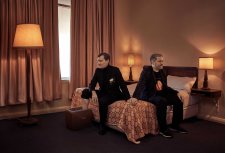
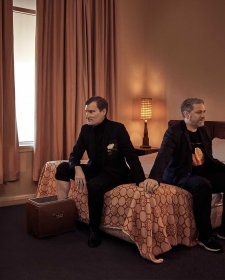
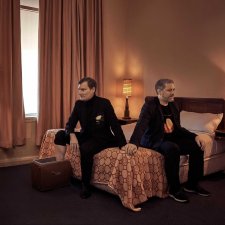
Sandra Bruce gazes on love and the portrait through Australian Love Stories’ multi-faceted prism.
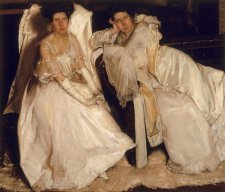
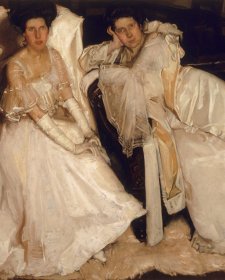
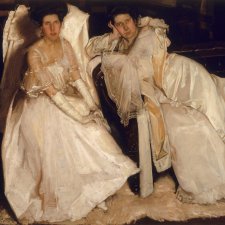
Sarah Engledow is seduced by the portraits and the connections between the artists and their subjects in the exhibition Impressions: Painting light and life.